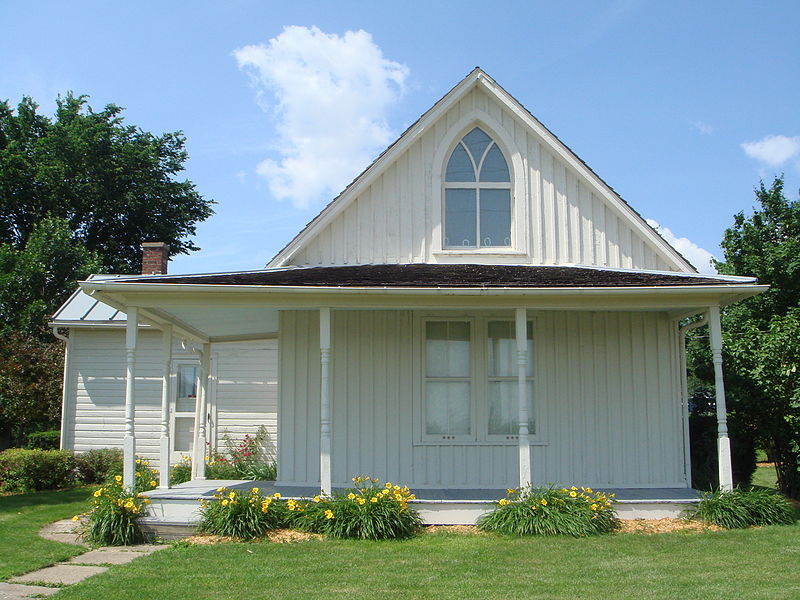Home > Famous Houses in United States > American Gothic House
American Gothic House

The American Gothic House: Iconic Symbolism and Architectural Legacy
Introduction :
The American Gothic House, located in Eldon, Iowa, is an iconic architectural landmark that has captured the imagination of people around the world. Immortalized in Grant Wood's famous painting "American Gothic," this humble house has become an enduring symbol of American art and culture. In this essay, we will explore the history, architecture, artistic significance, and cultural impact of the American Gothic House. We will examine how this simple structure has come to represent both the aspirations and the complexities of American identity.
Historical Background :
The American Gothic House was built in the late 19th century and was originally a farmhouse owned by Charles Dibble. The house is a classic example of the Carpenter Gothic architectural style, characterized by its steeply pitched roof, pointed arches, and decorative trim. It stands as a testament to the rural architecture prevalent in the American Midwest during that era.
Grant Wood's "American Gothic":
The American Gothic House gained worldwide recognition when artist Grant Wood painted it in 1930. Wood's iconic painting, titled "American Gothic," depicts a stern-looking farmer and his daughter standing in front of the house, holding a pitchfork. The painting, now housed in the Art Institute of Chicago, has become an enduring symbol of American art and culture, representing rural life and the values associated with it.
Architectural Significance:
The American Gothic House embodies the characteristics of Carpenter Gothic architecture, a style popularized in the 19th century. The house features pointed arches, vertical board-and-batten siding, and ornate detailing, reflecting the influence of the Gothic Revival movement. It represents a blend of traditional European architectural elements with the practical needs and materials of American settlers.
Cultural Impact and Symbolism:
Grant Wood's "American Gothic" painting has had a profound impact on popular culture, becoming an instantly recognizable image worldwide. The painting is often interpreted as a commentary on American values, including hard work, rural life, and the virtues associated with the American heartland. It has been parodied, referenced, and reimagined in various mediums, cementing its status as an enduring symbol of American identity.
Preservation and Legacy:
The preservation of the American Gothic House has been a testament to its cultural and historical significance. In 1991, the house was listed on the National Register of Historic Places, recognizing its importance as a cultural landmark. The house has undergone restoration efforts to maintain its architectural integrity and ensure its continued presence as a touchstone of American art and culture.
Tourist Attraction and Cultural Heritage:
Today, the American Gothic House attracts visitors from around the world who come to see the iconic structure that inspired Grant Wood's painting. The house has been transformed into a museum, showcasing Wood's artwork, providing insights into rural life in the early 20th century, and exploring the cultural impact of "American Gothic." The site serves as a hub for art enthusiasts, history buffs, and anyone interested in exploring the intersections of art, architecture, and American identity.
Conclusion:
The American Gothic House stands as a testament to the power of art to elevate the ordinary and immortalize the familiar. Grant Wood's iconic painting and the Carpenter Gothic architecture of the house have become intertwined, representing the essence of American identity and rural life. The house's architectural legacy and the enduring cultural impact of Wood's masterpiece continue to captivate and inspire generations of visitors. The American Gothic House reminds us of the intricate connections between art, architecture, and the stories we tell about ourselves, serving as a touchstone of American artistic and cultural heritage.




